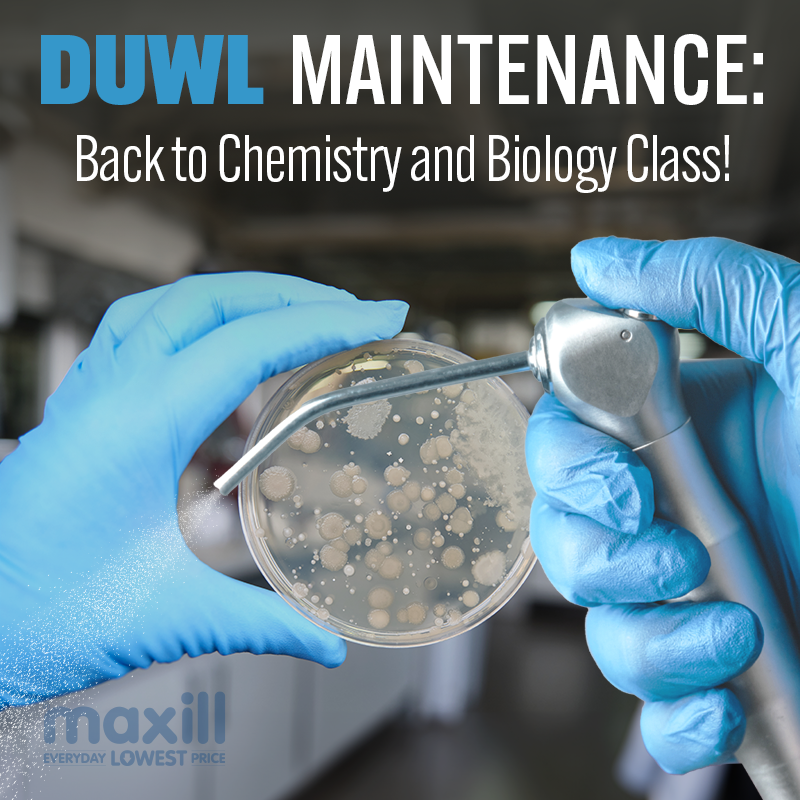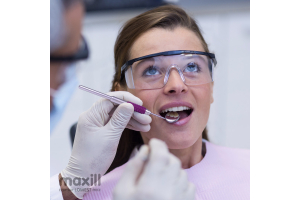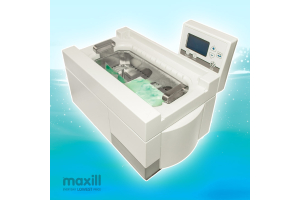The Importance of Dental Unit Waterline Maintenance: Best Practices for Ensuring Patient Safety

Maintaining a clean and safe environment in a dental office is of utmost importance. One area that often is overlooked, yet plays a crucial role in ensuring patient safety is dental unit waterlines.
Dental unit waterlines, or DUWLs, can harbor harmful bacteria that pose a risk to dental staff and patients. This article will explore the importance of dental unit waterline maintenance and discuss the Centers for Disease Control (CDC) and American Dental Association (ADA) recommendations for best practices for ensuring optimal patient safety.
Whether you are a dental professional or a patient seeking dental care, understanding the significance of proper waterline maintenance is essential for a healthy and safe dental experience. So, let’s dive in and explore the world of dental unit waterlines and the best practices to keep them clean and safe.
Dental Unit Waterline Quality
In most dental settings, the water used comes from municipal water suppliers. This water is connected directly to the dental unit through office plumbing. The CDC recommends that dental unit water used in nonsurgical procedures measure less than or equal to 500 colony-forming units of heterotrophic bacteria per milliliter( 500 CFU/mL) of water. This level is a standard the Environmental Protection Agency (EPA) sets for municipal water under the surface water treatment rule. The plastic tubing, which carries the water to handpieces, air-water syringes, ultrasonic scalers, and into the patient’s mouth, can become colonized with pathogenic microbes.
Contaminated aerosols or direct contact with contaminated water can also clearly spread infectious microorganisms. These microbes include bacteria, fungi, and protozoa that live within the slime layer called biofilm that protects and feeds them. This biofilm reservoir forms within all water environments, and the small-bore tubing increases the ability of biofilms to develop, increasing the number of free-floating microorganisms in the water.
Microbial counts in dental treatment water can reach as high as 200,000 CFU/mL. Although most organisms living in dental water systems are common water bacteria with little potential for causing illness in healthy individuals, there have been recent reports of human disease and death from contaminated water from dental equipment in immunocompromised individuals. The most common pathogens in these reports were Mycobacterium abscessus, Pseudomonas aeruginosa, and Legionella bacteria. Microorganisms can also be transferred back into the waterlines from patients’ mouths during treatment.
Exposing patients to potential disease is not acceptable. Cleaning, maintaining, and monitoring our dental unit water is a significant means to ensure compliance with infection control principles.
The CDC recommends that any dental device used in the mouth and connected to a dental water system be flushed to discharge contaminated water and air for 20-30 seconds. This method physically flushes out any patient material that may have entered the handpiece, air, or waterlines. Using anti-backflow valves on handpieces and saliva ejectors is also an option.
Flushing at the beginning of the day can rid the DUWL of stagnant water. However, according to the CDC, it is no longer recommended as a water-quality control method because it alone has little effect on waterline contamination and does not prevent or eliminate biofilm.
To control the biofilm and the number of free-floating microorganisms, the manufacturer may suggest filtration devices, chemicals, or a combination. Chemical treatment systems typically involve disinfectants or other antimicrobial agents to control bacterial growth in the waterlines. These systems may require periodic maintenance, such as flushing or replacing the disinfectant cartridges, to ensure effective treatment.
Filtration systems, conversely, remove impurities and bacteria from the water using various filtration methods. These systems may require regular maintenance, such as replacing filters, to ensure continued effectiveness. The choice of system will depend on factors such as the quality of the incoming water and the specific needs of the dental practice. The dental team should then establish a schedule for waterline maintenance. Some cleaning methods are as follows:
- Periodic chemical treatment with germicidal agents or cleaners designed to inactivate and remove biofilm (shock treatments)
- Continuous treatment of water systems with low-level germicides, such as iodine or silver-impregnated tubes or tablets inserted into water bottles, is safe for human consumption or use in dental procedures.
- In-line systems connected to municipal water add metered slow-release germicides to water entering the dental unit.
- If using self-contained water bottle systems, clean and shock the bottles following the manufacturer’s instructions
DUWL Monitoring
Dental professionals should implement a routine testing schedule to assess the microbial and chemical quality of the water in their dental unit waterlines. This can be done using commercially available testing kits that provide quick and reliable results. The testing should be conducted regularly, as dental associations and regulatory bodies recommend, to ensure compliance with industry standards.
In addition to microbial testing, dental practices should also monitor the levels of chemical disinfectants used in waterline maintenance. It is essential to ensure that the concentration of disinfectants is within the recommended range to effectively control bacterial growth without posing a risk to patient health.
Monitoring and testing water quality should not be seen as an isolated task but rather as an ongoing process. Regular assessment allows dental professionals to promptly identify any issues or deviations from the desired standards and take corrective measures. Dental staff should receive comprehensive training on waterline maintenance protocols and guidelines. Proper education and understanding of best practices will help ensure consistency and effectiveness in maintaining clean waterline systems. This training should cover topics such as the importance of waterline maintenance, steps for monitoring and testing water quality, flushing waterlines, proper maintenance schedules, and waterline cleaners or disinfectants.
In addition to training, dental professionals should stay updated with the latest research, guidelines, and recommendations provided by the American Dental Association and regulatory bodies. These organizations often release essential information related to waterline maintenance, such as updated protocols, new technologies, and emerging best practices.
Regular documentation and record-keeping are essential to demonstrate compliance with guidelines and regulations. This includes keeping records of water quality testing results, maintenance procedures, and any corrective actions taken.
By diligently following and documenting compliance with guidelines and regulations, dental practices can demonstrate their commitment to patient safety and maintain high-quality care.
Ongoing education is essential to keep dental professionals updated on the latest recommendations and advancements in waterline maintenance. Dental professionals can adapt their practices and continuously improve patient care processes by staying informed.
The importance of dental unit waterline maintenance cannot be understated. Dental professionals must go beyond simply following guidelines and regulations; they need to be trained in best practices for waterline maintenance. Proper training equips professionals with the knowledge and skills to implement regular testing, maintenance, and water treatment methods effectively.







